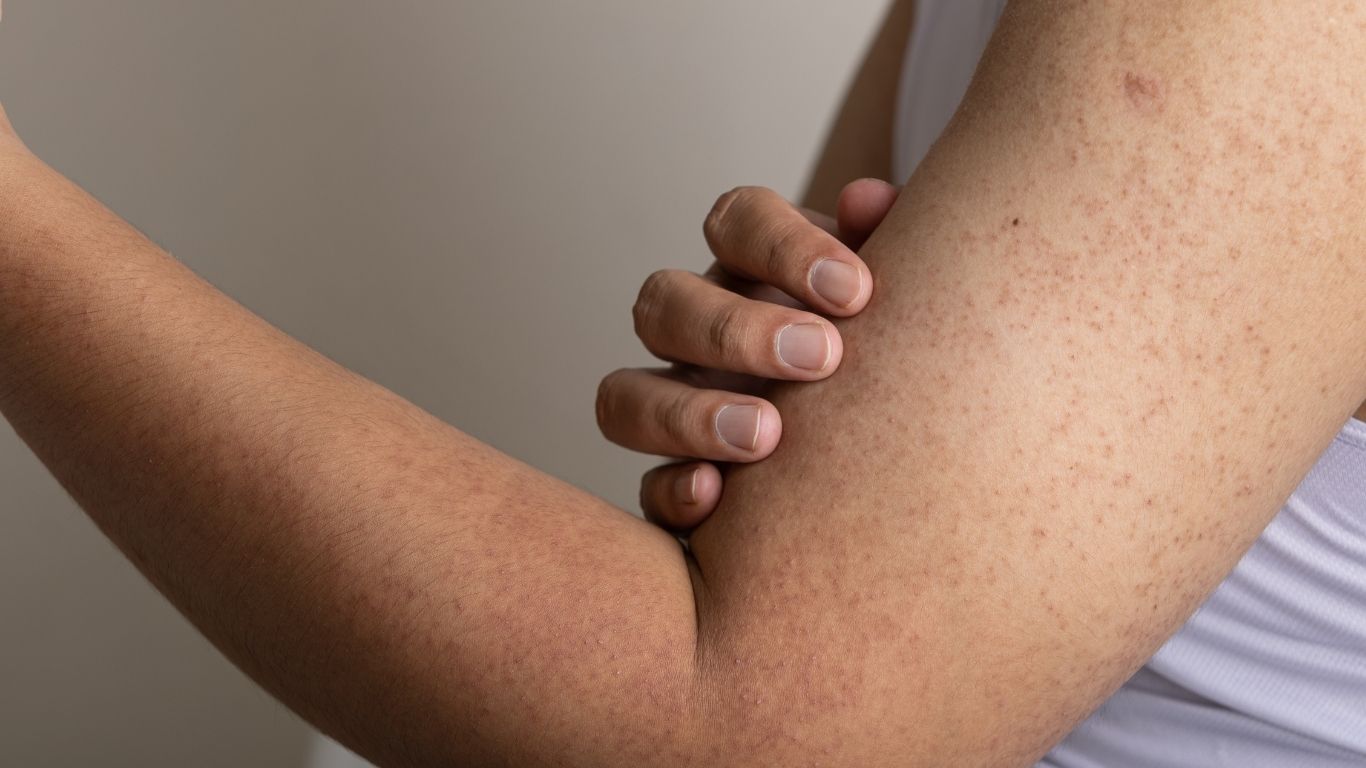While keratosis pilaris is a benign skin condition, its presence concerns many clients – which is why it can be useful to educate clients on the best treatment options and at-home care
What is keratosis pilaris?
“Also referred to as ‘chicken skin’ or KP, keratosis pilaris is a benign, often hereditary skin condition marked by small, gooseflesh-like bumps – typically found on the on upper arms, thighs, buttocks, and sometimes cheeks or torso,” explains Dr Jessica Halliley, founder of Your Beauty Doctor and experienced NHS GP.
While some clients report feeling self-conscious over the appearance of these bumps, they can also result in dry, and sometimes itchy, skin.
What causes keratosis pilaris?
According to Dr Sina Ghadiri, consultant dermatologist and founder of Sinaesthetics, keratosis pilaris is caused by “the abnormal plugging of hair follicles by the protein keratin, leading to a possible subsequent inflammatory reaction around the follicle”.
While it is often influenced by genetics (a large proportion of cases are inherited) eczema and hormonal fluctuations can also be a contributing factor.
Because of this, Dr Halliley notes that the condition is often more noticeable in the winter, when dry skin can be exacerbated.
What are the best treatment options for keratosis pilaris?
When it comes to treating KP, topical products are often the best recommendation to give to your clients, with Dr Halliley suggesting a low-dose retinol or prescriptions such a tretinoin or adapalene.
“One of the most effective ingredients is Urea at a 10% concentration, which works by softening keratin and smoothing the skin's surface,” says Professor Firas Al-Niaimi, consultant dermatologist and laser expert.
“Clinic treatments can also be beneficial, such as chemical peels which help to remove the buildup of dead skin cells and improve skin texture over time,” he adds.
What should be avoided when treating keratosis pilaris?
While many clients’ instincts are to use physical exfoliants, this can irritate the skin, which is why Dr Halliley advises against scrubbing.
She also cautions against extended topical steroid use, noting that this should only be used for short-term inflammation.




square.jpg)